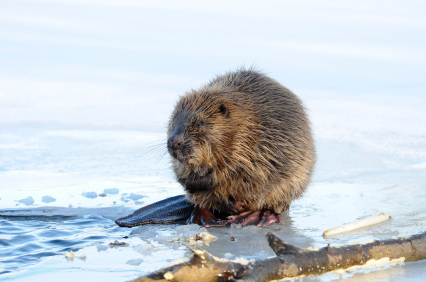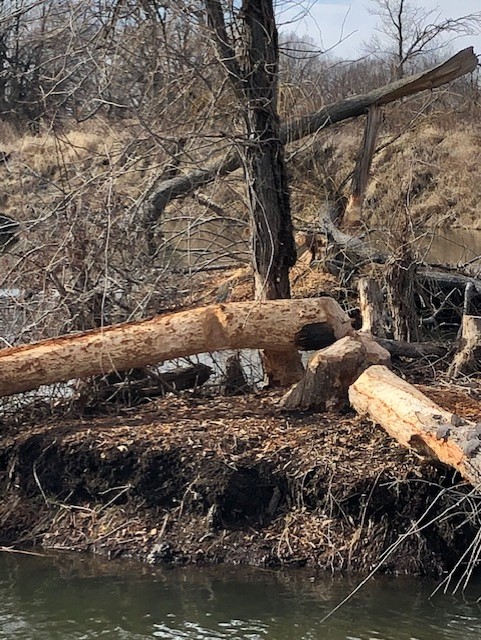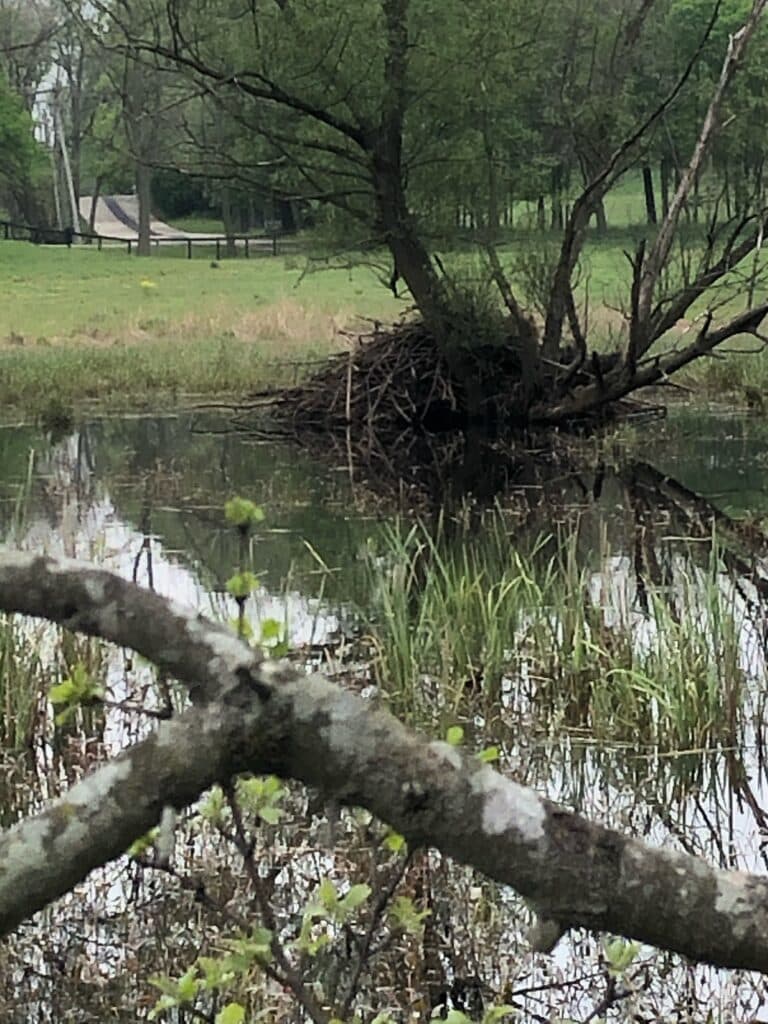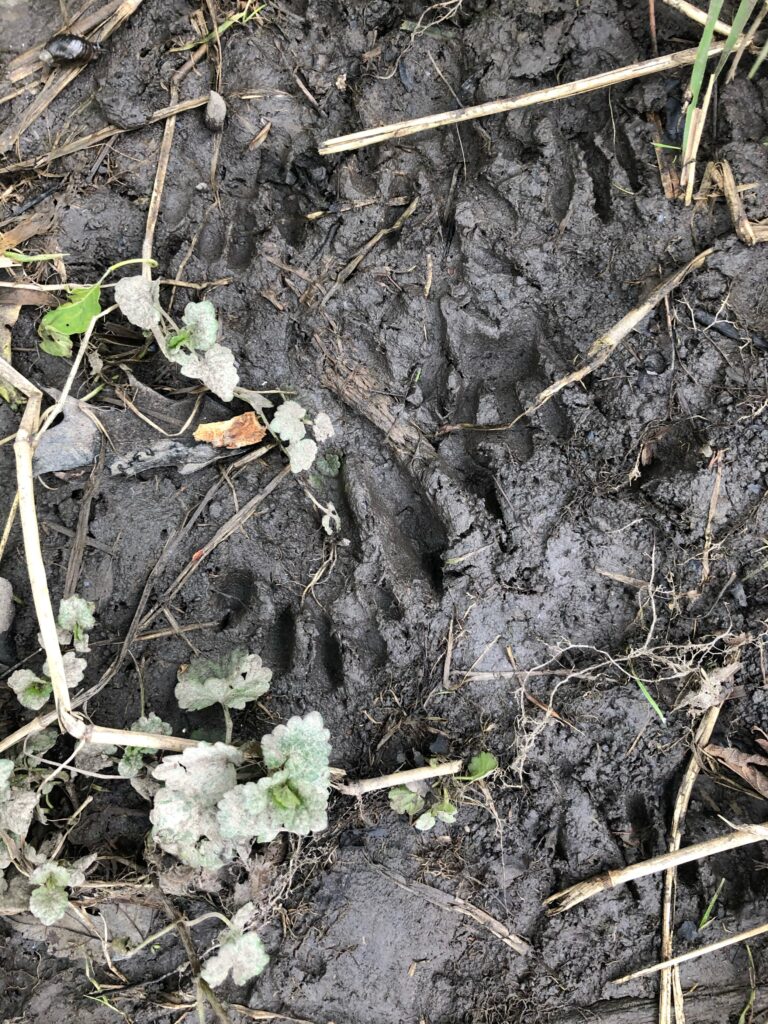
Beavers are one of several medium-sized mammals that live where water is an essential element to their habitats. Beavers are the largest rodents residing in North America and second only to South America’s capybaras in the world. Beavers, along with humans, are one of the only animals that can engineer their surrounding environment.
What does a beaver look like? They have stocky bodies, webbed feet, and a flat tail. Although clumsy when walking on land, beavers are adept swimmers. If you live near water and think you see a beaver on your property, it’s time to call Critter Control to confirm and humanely remove the beaver before it creates costly damage to your yard.
Read on to discover what a beaver looks like and why it is a problem when it is on your property.
Where Do Beavers Live?

Considered a semi-aquatic mammal and found throughout North America, except in the deserts of California, Nevada, Utah, and Arizona, beavers live in ponds, lakes, marshes, streams, and rivers.
When beavers move into the neighborhood, they build watertight dams out of branches, saplings, and sticks that they caulk with mud. What does a beaver dam look like? If you’ve never seen one, you may not recognize it as a beaver dam. Built to slow down running water, the ponds that develop as a result of beavers’ work are excellent habitats for many other forms of wildlife and provide food for larger animals that live in the surrounding area.
Beavers set up residence in these ponds, building large lodges away from the shore that rise above the water, forming an island. A beaver dam entrance is made underwater for safety, but their living quarters are located above the water level.
How Do You Identify a Beaver?
When in water, beavers can be hard to tell apart from otters and muskrats. In fact, when it comes to muskrats vs. beavers, they are almost identical. However, beavers are most easily recognized on land when their large, flat tails give them away.
The pests have thick, reddish-brown to black fur, small eyes, and tiny, rounded ears. Built for stability and power rather than speed, beavers are stocky, usually weighing between 30 and 40 pounds. They have broad, flat, and scaly tails that are used as rudders while swimming.
Like rats, squirrels, and other rodents, beavers have four large, yellow or orange-colored front teeth that never stop growing. As a result, they must be worn down daily through constant gnawing on trees.
Beavers vs. Muskrats
Beavers and muskrats share some of the same qualities. They are both semi-aquatic rodents that create lodges and tunnels in ponds and wetlands. Both can cause similar damage in terms of water displacement, but key differences between muskrats vs. beavers include:
- Size: Beavers are larger and more stout than muskrats.
- Feet: Muskrats do not have webbed feet.
- Tails: Muskrats have a long, thin tail, while beavers have a wider, flat tail.
- Swimming: When muskrats swim, their tails are out of the water, sometimes pointing straight up. Beaver tails are just below the water’s surface.
- Facial Features: Beavers have larger ears and noses.
- Diet: Beavers are strict herbivores. Muskrats are mainly herbivores but also like to eat small fish and mussels.
Beavers vs. Woodchucks
Beavers and woodchucks may look similar at first glance but have many more differences than similarities. Woodchuck vs. beaver differences include:
- While woodchucks are closer in size to beavers than muskrats are, beavers are still larger and weigh much more than woodchucks.
- Beavers live in and around bodies of water, whereas woodchucks live in woodlands and meadows.
- Woodchucks hibernate. Beavers do not.
- Beavers build dams in water. Woodchucks dig tunnels in the ground.
Again, the best way to tell a beaver vs. woodchuck is by their tails. Woodchucks have stubby, long tails. If the animal you see is in water, it is not a woodchuck.
What Are Signs of a Beaver?
In addition to being larger than other rodents, beavers leave more noticeable signs of their presence. While most rodents cause cosmetic damage by gnawing at buildings or trees, a single beaver can fell an eight-foot tree in five minutes. Other signs include:
- Seeing beaver footprints, which are more hand-like than paw-like, but with web-shaped back prints.
- Seeing a dam in a nearby pond or stream.
- Finding pencil-point gnaw marks on trees.
- Activity during dusk and dawn, which is their most active time of day.



What Problems Can Beavers Cause?
Depending on a home’s location, issues caused by beavers can range from minor to severe. Beavers can be dangerous because of the damage they can cause and the diseases they carry.
Nuisance behaviors such as eating garden plants or stripping trees of bark are common, while more serious damage can include trees falling on homes. Flooding can also result when beavers dig into river banks or dam nearby water sources. Like most rodents, they like to gnaw on wires, creating a potential fire hazard.
Beavers are rabies vectors and can also transmit other diseases, such as Tularemia and Giardiasis. Giardiasis is a parasitic disease with the nickname beaver fever. Humans can be infected by ingesting water from a river or pond with beavers, and it causes fever, diarrhea, and fatigue. Parasites beavers can carry include worms, beetles, and mites.
How Do You Remove Beavers?
As fur-bearing animals, beavers are considered a protected species. Their dams, lodges, and habitat cannot be destroyed or altered without permission. Beaver removal and relocation must be handled by a wildlife expert, and Critter Control knows how to do this humanely, safely, and within regulations.
Beavers are best removed by traps that are often placed underwater. The types of traps used depend upon the situation and can include foot-hold, body-grip, and cage.
Sometimes, it is best to use methods to keep them off your property by putting up fencing around trees and using repellents. Beavers have a strong sense of smell, so sprinkling predator’s urine can encourage them to forage elsewhere for food.
Beavers play an important environmental role, and Critter Control uses only humane methods to remove beavers.
Contact Critter Control if You Spot a Beaver
If you’ve seen a beaver on your property or see signs of a beaver, contact a Critter Control office near you. A Critter Control specialist will be able to assess the number of beavers, their location, and the type and extent of damage, providing you with a custom plan for removal.
Beaver Pictures
